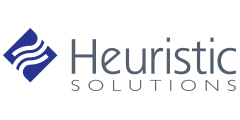Over the last ten years, we have worked with various accreditation organizations as they consider taking their accreditation process online. We have encountered a few assumptions or accreditation process myths along the way that we would like to address. Read on as we debunk four myths about the accreditation process.
#1: A PDF Application Is an Electronic Application and Online System Is Dropbox, Excel, and Email
Remember when “fillable” PDFs came out, like 15 plus years ago, and everyone called it an electronic form? You could even hook it up to an access database. It was transformative. Fill it out on your computer rather than printing it, handwriting in the information, and scanning it back in.
And then along came Dropbox, allowing you to organize your documents in shareable folders. Perhaps you tracked organizational information in excel and had a shared email box for communications. Boom! You were online. Nowadays, we have online form builders, some with modest workflow tools. These simple systems replace the tools of the past. But can they do more?
A robust accreditation management software platform will allow you to:
- Capture registration information
- Create an application with both a main workflow and sub-workflows
- Manage reviewers
- Application deficiencies
- Application status
- Automated communications
- And report on progress
#2: Site Visits Have to Be in Person
2020 really put this assumption to the test. Post lockdown, the industry has put this accreditation process myth behind us.
In prior years, organizations conducted site visits (in person) to confirm the information presented in the self-assessment, resolve any questions, and gain a deeper understanding of the organization and how they meet the accreditation standards.
With technology, we can revisit how much of this interview needs to be in person and how much can be virtual. Are there specific standards that can be reviewed in a virtual format? If not, why? With a thoughtful agenda and virtual conference software like Zoom (and breakout rooms), organizations are considering virtual site visits as a viable option.
#3: Reviewer Bias Is Inevitable
We all have biases. The challenge of an accreditation organization is how to minimize reviewer bias in the accreditation process so that accreditation outcomes are consistent and not dependent on who the reviewers are.
An accreditation management platform can offer an organization a couple of methods to standardize the review process and thus minimize bias. These include:
- Reviewer training – Training on what the reviewer is evaluating standard by standard with set criteria for what meets the standard or what is a deficiency.
- Evaluation rubric – A standard by standard review rubric where the reviewer selects from a set of dropdown ratings and provides a narrative or evidence to support the rating.
- Double blind reviews – Two reviewers will rate the same application. Discrepancies between the reviewers are escalated to a tie-breaker review.
- Reviewer activity report – Compare all of your reviewer’s activity over time to determine if you have any outliers. Investigate your findings.
#4: Offering Guidance Is a Conflict of Interest
For many accreditation organizations where the standards are new, or there are new entrants in the market, the organization receives a lot of questions about their standards, intent, and how to comply.
A conflict of interest occurs when the accrediting organization consults with the applicant, advises them how to meet the standards, and then reviews and approves their application.
A conflict of interest can be managed in a couple of ways, including:
- With a robust accreditation management platform, you can offer guidance and intent within the application and associated with the particular standard. With this approach, all applicants will have access to the same information consistently.
- You can offer accreditation webinars where applicants ask questions regarding the standards and the process. You can then post these recordings so that they are available for all.
- Should you identify a deficiency in the application, you can create standard communications around the deficiency so that instructions for remediation are both specific to the applicant’s circumstance and also consistent and in line with the previously published guidance.
- And, if the industry does need additional consulting services, make sure that those services are offered by a separate organization with consultants not involved in the accreditation review process.
Overcoming Myths About The Accreditation Process With Technology
The solutions for all the above myths have one thing in common. They require the use of software designed explicitly for accreditation management. The technology solution might be video conferencing, webinars, or a robust accreditation management platform. With a little planning, we now have the tools to create efficient accreditation processes where the work is at the program level, not in accreditation administration.
Myths about the accreditation process could hold your organization back. However, many solutions are easy to implement with the right platform. If you’re interested in taking the barriers out of your accreditation process, consider a tech-forward approach.
Getting Started With Heuristic Solutions
Heuristics Solutions provides software solutions for certification and accreditation organizations that give you the tools to manage your credentialing processes end to end.
If you are considering upgrading your accreditation management software after reading these myths about the accreditation process, consider a system built for an organization like yours. To learn more, connect with us on our contact page or schedule a meeting with one of our expert team members.




